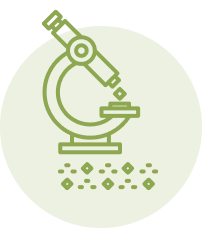Blossom end-rot (BER) is a common problem that affects a range of crops, including tomatoes, peppers, squash, and melons. It can also affect eggplant. BER is particularly common in container grown crops. Although sometimes considered a disease by gardeners, BER is actually a disorder caused by localized calcium deficiency in developing fruit.
Cause
The cause of BER is insufficient calcium levels in developing fruit. This is not necessarily the result of calcium deficiency in soils. Understanding the factors that promote BER disorder involves a basic understanding of how calcium is taken up by and moves within plants. Plants absorb calcium passively, taking it up as they absorb water in their roots. After uptake, calcium travels in water as it moves through plants in specialized water transport tissues called xylem. Calcium cannot be actively moved or transported within plant after it is absorbed. The way calcium is moved in plants makes BER more of a cultural and environmental problem than a nutrient deficiency problem.
Blossom End-Rot Myths
Probably because it is such a common problem, a number of garden myths persist about how to prevent or control BER. And because it often affects just the first few fruit that set, the fact that BER stops occurring can make it appear that ineffective treatments have “solved” a problem which would have gone away on its own.
Application of Epsom salts (magnesium sulfate, MgSO4) is sometimes recommended as a remedy for blossom end-rot. However, Epsom salts do not contain calcium and have no influence on soil pH. Thus, Epsom salts are not effective for preventing or controlling BER. In fact, magnesium can compete with calcium for uptake, so Epsom salts may have a negative effect on calcium uptake.
Foliar sprays of calcium are usually not very effective for controlling BER. Even though plant leaves can absorb calcium from sprayed fertilizers, little calcium is transported from the leaves to developing fruit, where it is needed to prevent BER.
Putting a handful of crushed eggshells into planting holes when transplanting is another common practice that allegedly reduces BER problems. Eggshells are primarily composed of calcium carbonate, the same mineral that makes up limestone. If they are very finely pulverized before being added to the soil, eggshells can be a source of calcium and will even raise soil pH. This effect occurs more slowly than limestone. Coarsely crushed eggshells do not break down quickly enough to provide significant calcium to the soil, so they are not effective for preventing BER.
Best Practices for Prevention and Control
The primary key to preventing and controlling blossom end-rot is providing even soil moisture. Avoid large fluctuations in moisture levels, overly dry conditions, and overly wet (saturated) soil conditions. When growing BER susceptible plants in containers, use a large container filled with a high quality soilless potting mix, and be sure that plants don’t dry out or wilt between waterings.
Good soil management to improve soil organic matter and soil structure helps improve a soil’s water holding and oxygen content. This helps to reduce potential root stress and makes moisture management easier.
Applying an inch or two of organic mulch to the soil surface will reduce water evaporation and conserve soil moisture. Be sure to avoid damaging plant roots when weeding or cultivating around plants.
Avoid overfertilization with nitrogen when plants begin flowering and fruiting, which can promote vegetative growth and increased moisture loss through leaves. Use a fertilizer 2 to 3 times higher in phosphorous (the middle number on a fertilizer label) than nitrogen (the first number).
Remove any fruit affected by BER when symptoms are noticed. This helps plants to utilize available resources for ripening the remaining fruit. Removed fruit can be safely discarded or added to the compost pile.
Variety selection can also reduce the likelihood of blossom end-rot development. For instance, large-fruited tomato varieties are generally more likely to develop BER than cherry or grape varieties. Some tomato varieties were bred to be less susceptible to BER. In peppers, varieties with elongated fruit tend to be more susceptible to BER than varieties with shorter, more rounded fruit.
Finally, calcium application at or before planting will help to ensure there is available calcium in the soil. Products like Earth Science Fast Acting Gypsum® can be a source of calcium, as well as helping to improve soil structure.



